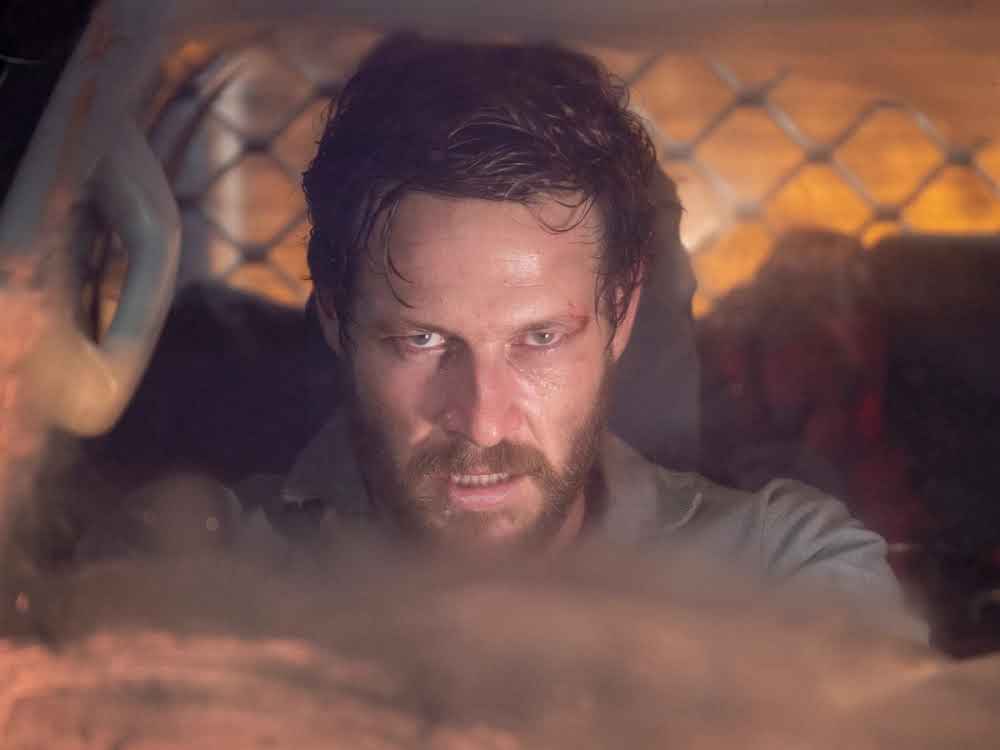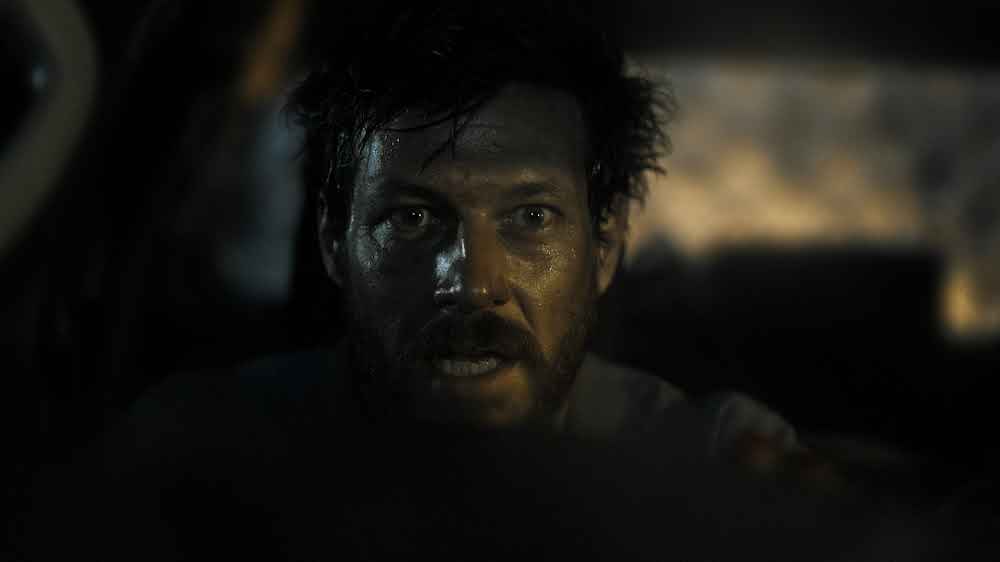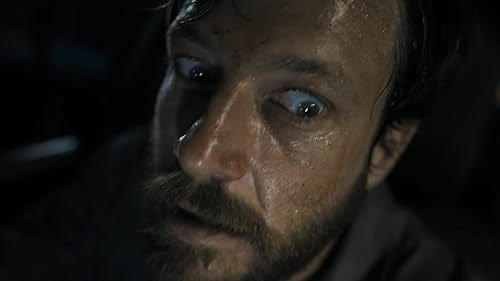The old saying is that form follows function, which works fine when you’re building a post office, but not always when you’re making a movie. John Curran’s Mercy Road is an example of a film where the function might well have grown out of the form that was available to him, or more accurately, the new form with which the Australian director of Tracks wanted to experiment.
That’s virtual production, a method of making movies that, in layman’s terms, boils down to shooting a film with a single basic set and having all changes to its background occur virtually and in real time. This is made possible with the use of a so-called dream screen, kind of like the old-fashioned green screen, but on which backgrounds can be projected at the time the actors are filming the scene, meaning they are reacting to real AI-generated stimuli rather than imagining the dinosaur that will be there later on. The technical team can also manipulate such elements as the lighting without Curran even yelling “cut.” And that’s about all the technical details a brief review and a limited understanding will allow, though we can also tell you that this is the first such Australian production to rely so exclusively on the virtual.
You can tell watching Mercy Road that at this point in the technology’s evolution, a simple story with only one character on screen is about the most we can manage. That character is Tom (Luke Bracey), a bedraggled, desperate man who backs his car down the driveway of a house as the film opens. (That house, as with everything on screen other than the car chassis, does not actually exist.) We will learn pretty quickly why Tom is in such a hurry, but it has something to do with his daughter, whom he can’t reach on her mobile, and his daughter’s stepfather, who may be guilty of unspeakable and decidedly non-paternal behaviour toward her.
As Tom speeds down a long outback road that travels virtually by through his windows, he gets numerous calls from concerned acquaintances and strangers alike, ranging from his ex-wife to an emergency services person to a work associate. If you thought people didn’t actually make or receive phone calls anymore, Tom returns a decidedly different verdict on possibly the worst night of his life. The most ominous calls, though, are not from his own work associate, but from an associate of his daughter’s stepfather. This man (voiced by Toby Jones) may just know where his daughter is, and may give Tom a series of instructions that he must complete in a limited timeframe to ensure her safety – all the while sounding cool as a cucumber, sophisticated, and possibly sadistic. Fortunately for Mercy Road, all of these tasks can be completed from the comfort of Tom’s car.
Steven Knight operated under similar narrative constraints when he made the Tom Hardy vehicle (and yes we mean that literally) Locke in 2012. In that film, which also never leaves the inside of a car, the title character is handling increasingly less mundane calls as he drives along an English highway and approaches an event that may change the course of his future. When a film takes place in such a constricted setting, it has to have these gigantic stakes; Mercy Road just gets there a lot more quickly. Squint, though, and Bracey actually resembles Hardy in a distant sort of way.
Curran and company do make the most of their setting, one that’s aided by an 85-minute running time, as Tom must act quickly based on limited information being fed to him by an unreliable source. The dynamic that develops between him and his unseen interlocutor is similar to that between Saw’s John Kramer and one of his victims, where you don’t really have the time to consider alternative escapes from your situation because of how he’s designed the game. The trouble is, we need a protagonist to apply his or her own agency to the trajectory of a story, and Tom isn’t in a great position to do that. He’s more acting out the proscribed motions than writing his own script.
Bracey’s got to hold our attention the whole time, and he does this with technique of varying quality. His sweaty desperation comes through unmistakably, but the volume of this performance is turned up to 11, representing maximum mental instability at every moment. Some moments might have benefited from taking his foot off the gas pedal, so to speak. That said, the plot certainly supplies him plenty of reasons to be at the end of his tether.
For a story that seems largely born of this technology, Mercy Road is largely successful in keeping us in this sustained sense of intensity throughout. It falters a bit just at its climax, when a moment occurs that makes us reconsider everything we’ve assumed so far. At the same time, there’s a bit of confusion about what is actually happening and what conclusion we’re meant to draw from it. It isn’t such a surprise that when a film test pilots a new way of making movies, it leaves us wanting just a little bit more.
Mercy Road opens in Australian cinemas on Thursday.


